|
Succession Planning for Historical Societies
A FAHS Initiative
Do you have a good succession plan?
What tasks need to be performed for sustainability of the historical society?
What is your business model for sustainability?
|
|
|
Why we need to think about Succession Planning and Membership
One of the clear messages coming out of the FAHS Survey responses is
that a major challenge for many societies is ageing and declining
membership, but even when this is not a problem it can be difficult to
find people willing to undertake office-bearer responsibilities.
A certain amount of general guidance on these matters is already
available on the web, but it does not necessarily deal with the
particular characteristics of historical societies and what they do.
Some societies have strong membership numbers but a poor response when
executive positions need to be filled. Some have good leaders but small
memberships. Some show that successful events and leadership produce
all-round success. What lessons and guidance can these and other
experiences offer?
The FAHS Outreach Officer, Dr Bernadette Flynn will be compiling an
online guide about how to improve membership recruitment and committee
succession in historical societies and similar organisations.
Dr Flynn will be evaluating the already available material on the
web over the next few months and make a selection of those most
appropriate to recommend to historical societies. Do you have any models
that you can recommend ?
Bernadette will be approaching leaders of some of the most successful
societies across Australia to try to gauge the reasons for their
success. Please contact Bernadette directly on fahsbflynn@gmail.com or 02-4377-1682 for an interview or informal discussion.
A practical online training guide that will offer both appropriate
suggestions and a compilation of web links will be prepared for
publication in early 2017.
|
|
Celebrating NAIDOC Week and Heritage, 3rd - 10th July
|
|
|
|
NAIDOC week and heritage
The theme of this year’s NAIDOC week, which ran from July 3 to 10, was Songlines: The Living Narrative of Our Nation.
The FAHS celebrates Aboriginal and Torres Strait Islander history,
culture and achievements and recognises the contributions that
Indigenous Australians make to our country and our society.
One of the many events for NAIDOC week was at Parramatta - The area
of Parramatta has been occupied by the Burramattagal people, a clan of
the Darug, who lived here along the upper reaches of the Parramatta
River. Burramattagal is thought to be derived from the Aboriginal word
for the 'place where the eels lie down' to breed (in the Parramatta
River).
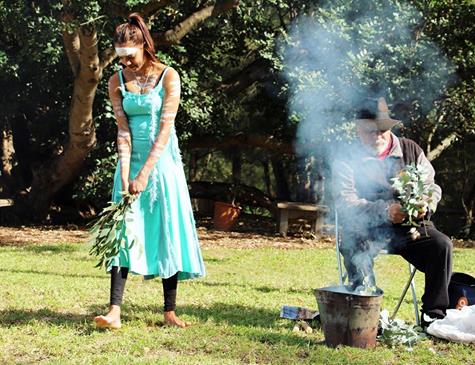 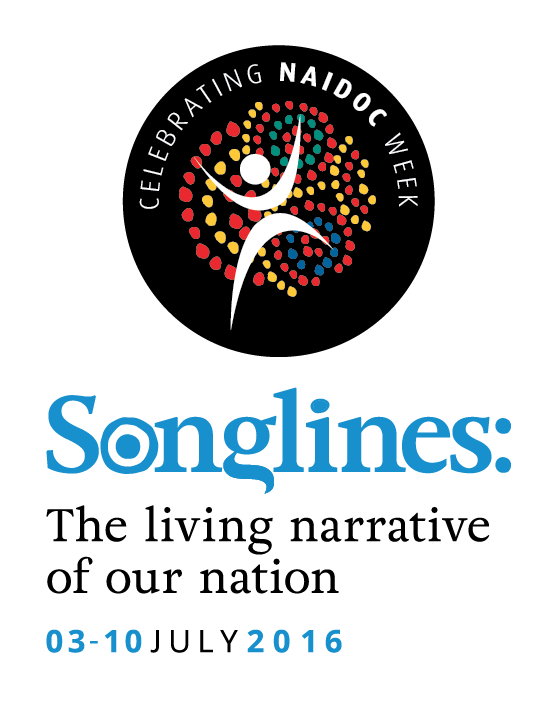
Mi-kaisha Parramatta Eels Jannawi
Dance Clan & Uncle Greg Simms performing the smoking ceremony
at the Old Government House - National Trust of Australia
NSW. City of Parramatta
Aboriginal culture and heritage was celebrated at Burramatta NAIDOC
with live entertainment, workshops, outdoor markets and a colourful
lights show and fireworks finale along the Parramatta River foreshore on
Sunday 10 July, from 1pm to 6pm.
This
year’s event explored the theme for NAIDOC Week, Songlines: The Living
Narrative of Our Nation, with the community able to learn about the
history and diversity of Aboriginal Australia and the relationships
between the land, river, sea and the people.
“Burramatta
NAIDOC showcases the incredibly important contribution Aboriginal and
Torres Strait Islander people make to our cultural life, and is a great
way to bring our local communities together,” City of Parramatta
Administrator Amanda Chadwick said.
Burramatta
NAIDOC Creative Consultant Jacinta Tobin said: “Songlines is an
important theme for me as a Darug songwriter, as the songlines of the
past told us how ancestral spirits created the land and life and today
they are layered with other stories of colonisation, migration and our
changing landscape.
“I
welcome everyone to come along to Burramatta NAIDOC and help strengthen
your connection to local Aboriginal people through song, culture and
art. Help keep the songlines of Burramatta alive and celebrate our
shared culture as Australians.”
http://www.parracity.nsw.gov.au/your_council/news/media/2016/june_2016/celebrate_songlines_at_burramatta_naidoc
|
|
National Archives of Australia - 15 million collection items are on the move
|
|
|
|
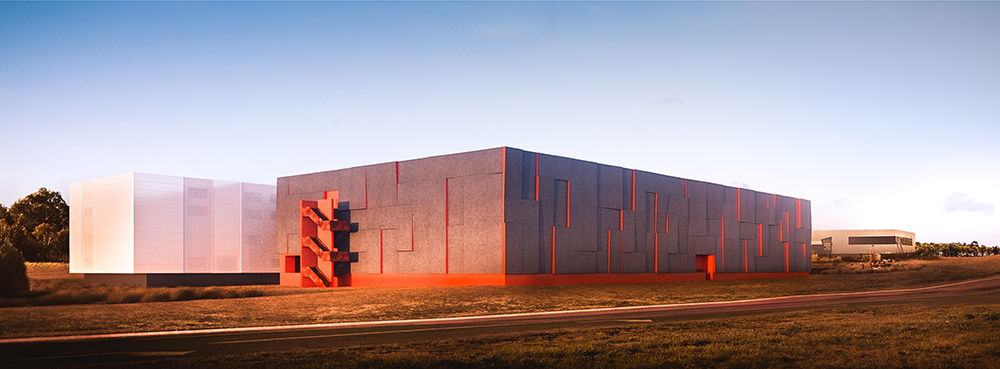 Artist's impression of National Archives Preservation Facility, Mitchell ACT Artist's impression of National Archives Preservation Facility, Mitchell ACT
The National Archives of Australia is moving the Canberra-based
collection and some of its audio visual collection from Sydney to a new
preservation and storage facility currently being constructed in
Canberra. This relocation of some 15 million items will commence in
November 2016 and continue through until 30 June 2017. The new facility
will ensure the collection continues to be preserved for future
generations.
During this period access to the National Archives’ collection based in
Canberra and some audiovisual material from Sydney will be disrupted.
There will be periods when it is not possible for the Archives to
provide access to records within the timeframes of its Service Charter.
Access to Archives records online or those held in National Archives state and territory offices will not be affected.
NAA Media release - 26 Feb 2015 - A contemporary new home for the nation's archival treasures
NAA Media Release - 15 Sep 2015 - Safekeeping Australia's history
NAA Media release - 5Feb 2016 - 15 million items ready to roll
Preserving your history for the future
Time-lapse slideshow of building progress
During this period access to the National Archives’ collection based in
Canberra and some audiovisual material from Sydney will be disrupted.
Sources: NAA website www.naa.gov.au
and e-mail from Stewart Crawford (Senior Reference Officer, Reference
and Information Services, NAA) re disruption to services during move.
|
|
Fire destroys top floor of Essendon Historical Society Museum
|
|
|
Fire breaks out at Essendon Historical Society Museum
A
blaze has swept through a 125-year-old former court house containing
old records and valuable photos in Melbourne's north-west.
The
Metropolitan Fire Brigade (MFB) said at least 50 firefighters tackled
the fire at the building, which houses the Essendon Historical Society
Museum, on Mount Alexander Road at Moonee Ponds about 8:30am on 27th
June.
The top floor of the two-storey former court house was fully ablaze, but crews brought the fire under control within an hour.
A large amount of smoke billowed from the building and people were advised to avoid the area.
The MFB said a faulty light transformer in the building's ceiling caused the fire and the damage bill would be about $450,000.
Essendon Historical Society president Bob Chalmers said he was devastated.
"We've
got all our records and photos inside and we've worked very, very hard
to restore the building in recent times and now it's ruined," he said.
"It's heartbreaking."
Old photos could be lost in blaze
Mr Chalmers said the photo collection housed in the building was valuable.
"Mainly
photos of the people and places dating well back so I don't know what
state they'll be in, but it won't be very good," he said.
"We
were in the process of digitising the photos, and there are some off
site probably that we can rescue but we won't know until we look into it
how much we've actually lost."
The
bulk of the Collection was fortunately spared from the worst by being
stored in other rooms that suffered minimal fire damage. Until further
notice, the Museum will be closed.
To support the Essendon Historical Society in its recovery from the fire, please click here. Any financial assistance you can provide is urgently needed and gratefully received. Donations of $2 or more are tax-deductible.
https://www.facebook.com/EssendonHistoricalSociety/photos/?tab=album&album_id=1336512979710175
Source: http://www.abc.net.au/news/2016-06-27/fire-blazes-at-historical-museum-in-moonee-ponds/7545782
|
|
Featured Historical Society - Moruya and District Historical Society
|
|
|
The
Moruya and District Historical Society (MDHS) is an independent,
incorporated, non-profit organisation which carries out activities with
the full support of a strong membership and an enthusiastic group of
volunteers. It runs a museum, research and genealogy library
and manages a large document, object and textile
collection with an increasing number of objects on display in
the museum's collection on ehive
|
|
|
|
Aboriginal and Torres Strait Islander viewers are warned that the following article contains images of deceased persons.
The Moruya Museum houses
a collection of furniture, books, artefacts and memorabilia that is
intended to show visitors something of the lives of the ordinary people
of this community from the middle of the nineteenth century. Most items
on display were donated by local families. The result is an eclectic mix
of considerable charm and interest.
Brian Harris, curator of the Moruya museum outlines the importance
of engaging the community and going out into the community rather than
waiting for the community to come to the museum. This is being achieved
by the development of exhibitions and the showcasing of rotating
displays, ensuring that the visitor experience is always different.
Brian attributes the success of MDHS to the enthusiastic volunteers
who are open to these new ways. The Historical
Society has linked to the culture, arts and real events in the
town through public programs, curated and travelling exhibitions
as well as social media (Blog,
Facebook, Instagram, Flickr and Pinterest,). Funding has been
sought through continuously submitting grant applications and
seeking sponsorship. The committee has also paid attention to
policy and planning including a strategic plan for the museum,
collections policy, conservation procedures and succession
plans.
A recent exhibition at the museum is Price's Cafe Exhibition
(touring since 2013). Price's Cafe is an exhibition,
developed by SouthEast Arts, which celebrates Moruya's social hub for
Aboriginal people in the 1950s and 60s. Inspired by stories told to
Aboriginal artist Cheryl Davison and with words by celebrated Australian
author and historian Mark McKenna, the interactive exhibition features
interviews, archival photographs and a re-created cafe
setting. This exhibition has touched many people during its travels
through the South Coast and Southern Tablelands areas. A previous,
highly successful exhibition The Wallpapered Manse takes
a glimpse into the history of domestic interiors and
artefacts of houses in the Eurobadalla. Working with Peter
Freeman, leading conservation architect, the exhibition
featured exquisite wallpapers from the 1860s through to more
modern designs of the 1930s. A recent exhibition All About Hats (from the MDHS collection) is being prepared for touring.
The museum’s next exhibition Moruya Undressed, featuring the museums large collection of underwear is currently being curated for opening on 2 September.
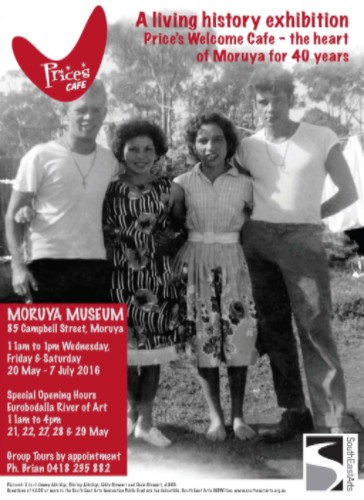 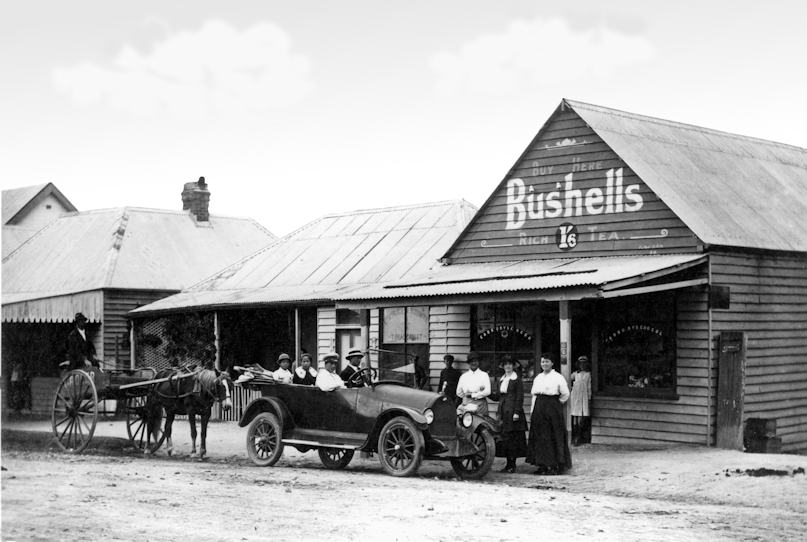
l: Publicity Flyer for Price's Cafe Touring Exhibition; r: Archival photograph from the Collection
Attached to the Museum is the Research area where resources for general
genealogy research as well as a local studies collection can be found
which includes files, archives and photographs. Aside from being a
go to place for social history, the research
area holds a large collection of photographs of the
district and the pioneers who developed the area. While many are on
display, many more are filed, indexed and stored in the museum's
database. Family research will be conducted on behalf of visitors
or interested correspondents. A fee of $25 is charged for each specific
piece of research.
The Research Officer will
conduct the search of MDHS records and will provide a written
report of any findings. Please address any written enquiries as
follows: Research Officer. Moruya and District Historical
Society Inc.. PO Box 259 Moruya NSW 2537
Address: Museum and Genealogy Research Room: 85 Campbell Street, Moruya
(02) 4474 3224 , NSW
Museum Opening Hours:
11am to 1pm Wednesday, Friday and Saturday.
January: 11am to 2pm every day except for public holidays/
Entry: Family $15.00; Adults $5.00; Children under 12 Free; School groups $3.00. Group tours and school groups by appointment. Secretary@mdhs.org.au
Research room and Genealogy Opening Hours:
10am to 2pm Monday, Wednesday
and Friday. 10am to 1pm first Saturday of the month. All Public
Holidays Excepted. Contact Research Officer Helen Ryan Research@mdhs.org.au
Sources: Web sites, blog, Facebook of Moruya and District Historical Society and interview with curator Brian Harris. Contact: http://www.mdhs.org.au/
|
|
|
New History Museum opens in WA
|
|
|
|
THE NEW MOORA MUSEUM
Moora Historical Society has opened a new museum in Clinch Street, Moora.
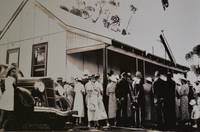
Open every Sunday from 10 am - 3 pm.
Entry is $5 p/p and includes Devonshire Tea
President
Kaye Lewis reports – We have had 2 openings so far with a total of
approximately 100 visitors. We are still opening Berkshire Valley
Folk Museum twice a year with the next opening in September.
Contact: Kaye Lewis – 08 9651 1372
Source: History West, Published by the Royal Western Australian Historical Society, Inc. July 2016
|
|
|
14th Anniversary of Opening of Whim Creek Hotel, Pilbara, WA
|
|
|
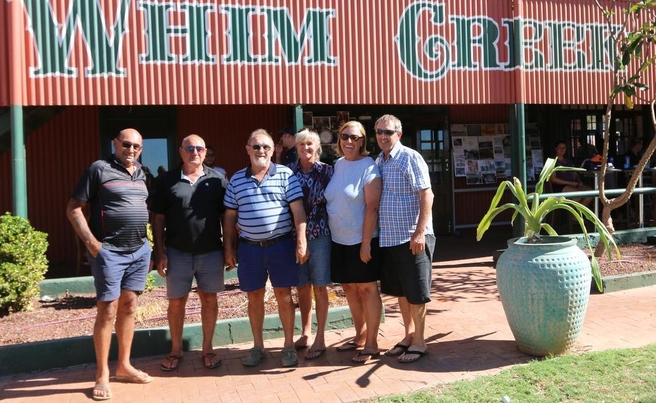
Frank and Tony Debono, Terry and
Elsie Keenan, and Bronwyn and Paul Martin at the Whim Creek Hotel.
Picture: Louise Allingham
|
|
|
The
Whim Creek Hotel is a famous landmark midway between Roebourne and Port
Headland, and was renowned as a rest stop, hotel and drinking
establishment for most of the 20th century.
The 140th anniversary of Whim Creek Hotel was celebrated on Sunday, 19th
June 2016 attracting locals from around Karratha and Port
Hedland. The hotel is one of two steel structures in Australia
built by Dorman Long Company of Middlesborough, England, the other being
the Sydney Harbour Bridge. Whim Creek town was established in response
to the discovery of gold there in 1872. It is said that the steel
structure was meant for Marble Bar Court House but time delays
determined that it be erected at Whim Creek.
In late 2013 the hotel was bought by the Ngarluma Aboriginal
Corporation and Ngarluma Yindjibarndi Foundation, who have restored and
re-opened it. as a project to further the health and well-being of the local indigenous population.
Source: Pilbara News 22 June 2016 p.14 including photograph.
|
|
|
A National Survey of Mechanics’ Institutes and Schools of Arts
|
|
|
Invitation to participate in a National Survey of Mechanics Institutes and School of Arts Project.
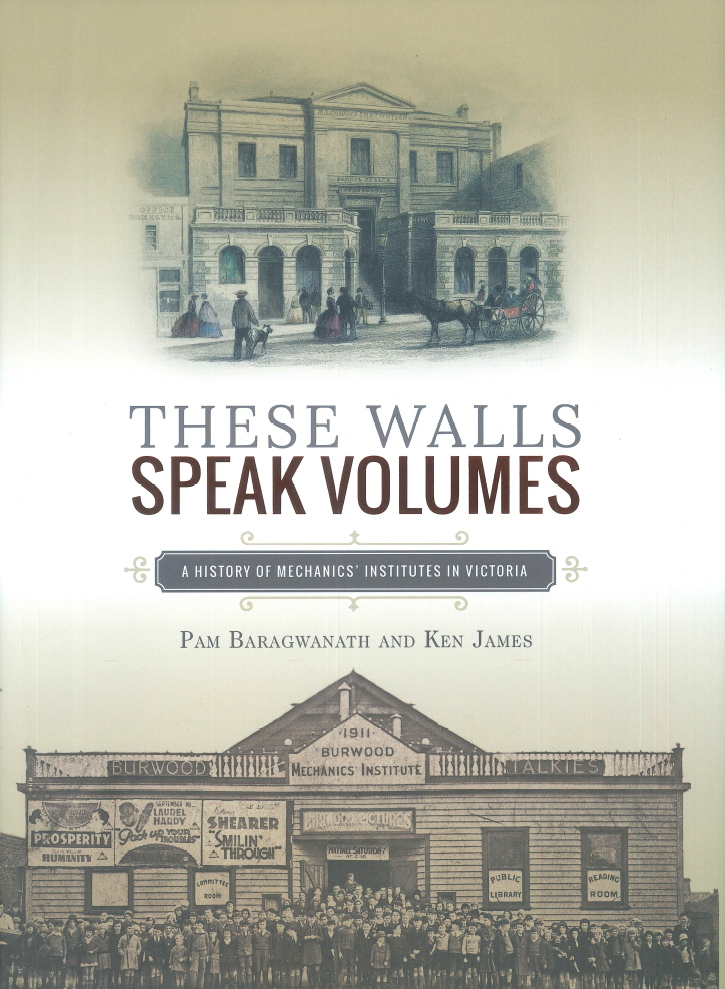
Stage
1. - A survey of Victorian institutes was published in 2015 ‘These
Walls Speak Volumes: a History of Institutes in Victoria’ with a brief
300 word entry and image where possible of the total of nearly 1000
institutes.
Since
then the authors, Pam Baragwanath and Ken James have compiled the
primary references and sources of information used for the book as well
as primary sources from the Mechanics’ Institutes of Victoria (MIV)
Scanning Project, Public Record Office of Victoria (PROV), the
Department of Environment, Land, Water and Planning (DELWP) and the
Sands and McDougall Victorian Directories in order to assist future
researchers in Victoria as well as other states in Australia. This
research guide is to be digitised and blogged by the State Library of
Victoria. The title is: Ubiquitous and necessary: Australia’s Mechanics’ Institutes and Schools of Arts: A Research Guide. In
the meantime, hardcopies of the guide will shortly to be made
available, the authors are happy to provide a draft sample copy for
consideration.
The aim of the National Project and Research Guide is:
a. To provide some of the groundwork of establishing accurate historic
and contemporary numbers in all Australian states and to facilitate
further research, via individual state surveys and field work and status
of the mechanics’ institutes and schools of arts buildings. It is
timely that a contemporary assessment of their legacy in Australia as
influential agents and contributors of social change can be more
realistically assessed nationally.
b. To correct the impression that they were both a failure and have
disappeared. The institutes and schools and their various alternative
names may be more correctly described as a phenomenon. Without head
office governance, nearly 1000 institutes were established spontaneously
and independently all over Victoria, evolving sustainably and
successfully for 176 years. Given early demographic changes and the
ephemeral nature of early settlements, the fact that the institutes
continued to be established over a period of 130 years in Victoria and
possibly elsewhere and that now half of them remain mostly in their
original buildings, they have earned a measure of success.
c. To hopefully stimulate future research on at least four integral
institute and school elements: the buildings, public libraries, adult
education, social capital including role of women and as community
halls.
Future
stages could possibly contain similar primary source evidence or new
evidence of the numbers, location and status of the buildings and extent
of the mechanics’ institute and schools of arts movement in Tasmania,
South Australia, Western Australia, New South Wales, Queensland
and the Northern Territory.
Enquiries concerning both 'These Walls Speak Volumes: A History of
Mechanics’ Institutes in Victoria' and the research guide can be made
to: knjames47@gmail.com or Pam Baragwanath
pgbarag@alphalink.com.au
|
|
|
Queensland Living History Federation Conference
|
|
|
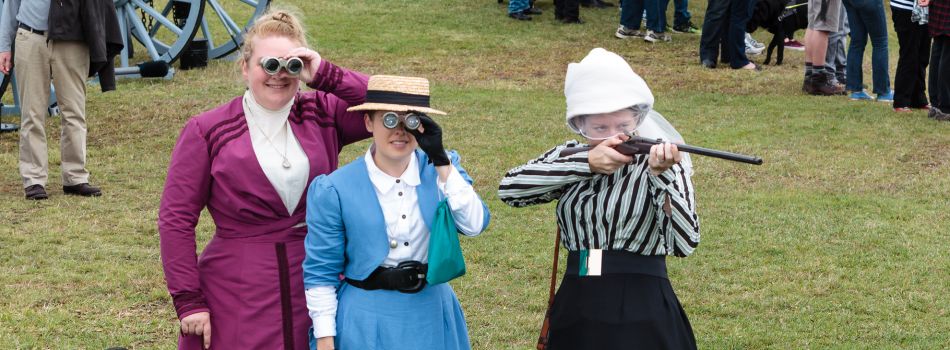
On
27 and 28 August, the Queensland Living History Federation is holding a
conference themed “Learning from the Past”. They are looking for
speakers – if you are interested, please contact Jill on either qlhf@qlhf.org.au or on 0488 657 543 for more information. The QLHF’s website is http://www.qlhf.org.au
Source: The Royal Historical Society of Queensland
|
|
|
Rum Hospital 200th Anniversary symposium, 30 July, Sydney
|
|
|
A Symposium to mark the 200th anniversary of the Rum Hospital
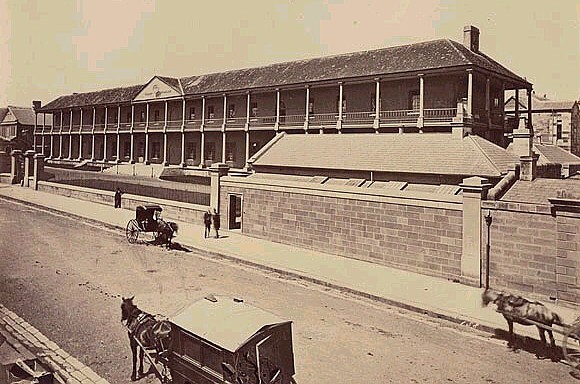
On the 200th anniversary of the opening of Governor Macquarie’s General
‘Rum’ Hospital for convicts, we invite you to discover the compelling
history of the oldest surviving public buildings in central
Sydney. From its origins serving convict patients to its many
adaptations as the Sydney Dispensary and Infirmary, Sydney Hospital, the
Sydney branch of the Royal Mint and NSW Parliament House, the site of
the Rum Hospital, its new building and those that remain, are interwoven
with some of the most important events in New South Wales history.
A Future for the Past, to be held in what was originally the south wing
of the hospital, explores this compelling two century story – from the
management of health in the early colony, the later functions of its
original buildings and the wider history of Macquarie Street; through to
the award-winning rejuvenation of The Mint and the future promise of
this significant site.
This full day symposium is brought to life by a compelling line-up of
speakers including medical historian Dr Peter Hobbins, City Historian Dr
Lisa Murray, Director of Heritage and Collections at Sydney Living
Museums, Ian Innes, and award-winning architect Richard Francis-Jones.
When: Saturday 30 July, 9:30am–5.00pm
Where: The Gold Melting Room, The Mint, 10 Macquarie St, Sydney
Price: $125 General | $100 Concession/Member |
$100 Select Associations | $100 Registered Architects | $75 full-time
Student. Admission price includes: lunch, refreshments and a
complimentary copy of the book The Mint Project (RRP $65)
For more information about this symposium, click here.
Source: http://enews.cmail20.com/t/ViewEmail/r/E56F16BF1A7A2B9F2540EF23F30FEDED
|
|
|
NSW Transport Heritage Grants Program
|
|
|
|
NSW Government funded program,
administered by the Royal Australian Historical Society (RAHS), and
supported by Transport Heritage NSW (THNSW).
|
|
|
Applications
are now open for the 2016 Transport Heritage Grants Program, a NSW
Government funded program, administered by the Royal Australian
Historical Society (RAHS), and supported by Transport Heritage NSW
(THNSW).
Click here for
details on the program and application forms. Completed application
forms and supporting documentation must be received by the RAHS no later
than 5pm, 31 August 2016.
|
|
Launceston’s Victorian Turkish Baths, Talk, Launceston Historical Society
|
|
|
|
Susan Aykut: Launceston’s Victorian Turkish Baths
Sunday 21 August 2016 – 2.00pm at the Meeting Room, Queen Victoria Museum at Inveresk
Sponsors: Launceston General Hospital Historical Committee and the Launceston Historical Society.
|
|
|
|
Karl Girardet
after A. de Beaumont, ‘Bain de Soliman’ (Interior View of Suleymaniye
Hamam, Istanbul, b. 1550 -57) mid 19th c. French engraving, collection
of Susan Aykut.
|
|
|
You are invited to attend the August talk Launceston Historical Society Inc.
Abstract: Exotic bathing venues are not new to Australia: Turkish
baths were part of our colonial history. They were found in capital
cities throughout Australia as well as some regional centres and
country areas. This paper looks at the three Victorian Turkish
baths constructed in Launceston in the nineteenth century. It
considers some of the moral, medical and scientific beliefs and ideas
behind their creation. While the motivation behind each of these
establishments was different, all promoted the health and wellbeing
of the community.
Source: Launceston Historical Society Inc., Newsletter No 154, July 2016
|
|
|
History Seminar, Launceston
|
|
|
 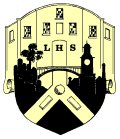 HISTORY SEMINAR, Sun 18 Sept, Meeting room, Queen Victoria Museum and Art Gallery, Inveresk HISTORY SEMINAR, Sun 18 Sept, Meeting room, Queen Victoria Museum and Art Gallery, Inveresk
|
|
A
seminar will be held jointly with Oral History Tasmania and the
Launceston Historical Society on Sunday 18 September 2016, with speakers
Brad Williams, Jill Cassidy and Margaretta Pos.
~ Archaeological dig at Launceston College / Gaol - a sneak preview of the college's plans for embracing their heritage.
~ What is there in oral history which has caused so many people to make
such a fuss of its benefits and has led to an explosion of books, radio
and television programs, museum exhibitions and more recently CDs and
videos using oral history?
~ Margaretta Pos' journey with colonial pioneer Elizabeth Fenton
Cost: $25 Prior registration is essential for catering purposes.
Enquiries: Lana Wall 03 6391 1086; Catherine Pearce 03 6331 6828 after 6pm or cath.pearce@bigpond.com
Further information: http://www.oralhistorytas.org.au/
|
|
|
|
The FAHS e-Bulletin, No. 153, 14th July 2016
|
|
|
|
|